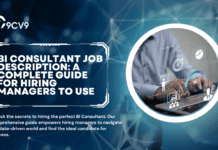Key Takeaways
- Understand the core components and structure of compensation frameworks that guide fair and competitive pay practices.
- Learn how companies design, implement, and maintain compensation frameworks to align with business goals and employee performance.
- Discover the benefits of structured compensation systems in improving transparency, retention, and overall workplace satisfaction.
In today’s highly competitive and transparent labour market, compensation has become more than just a transactional aspect of employment. It serves as a strategic lever that shapes how organisations attract, retain, and motivate top-performing talent. As companies strive to maintain internal fairness while keeping pace with market competitiveness, the need for a structured and equitable approach to managing employee pay becomes increasingly essential. This is where compensation frameworks play a pivotal role in defining how rewards are determined, distributed, and managed within an organisation.

A compensation framework, often referred to as a pay or salary structure, is a systematic model that outlines the principles, rules, and methods an organisation uses to determine employee compensation. Rather than relying on ad-hoc decisions or inconsistent pay practices, a compensation framework introduces a sense of order and transparency, ensuring that every employee’s remuneration aligns with their role, skills, performance, and market value. It provides the backbone for fair pay administration, allowing HR leaders to balance both organisational affordability and employee satisfaction. From startups to multinational corporations, compensation frameworks are instrumental in creating consistency and credibility in reward practices.
The concept of a compensation framework extends beyond base salaries. It encompasses a holistic structure that includes fixed pay, variable incentives, benefits, bonuses, equity options, and non-monetary rewards. Together, these elements form what is commonly known as the total rewards package. Each component within the framework is carefully calibrated to reinforce business goals—whether it is rewarding performance, encouraging skill development, or retaining critical talent in competitive job markets. For example, while a base salary ensures financial stability, performance-based bonuses and equity programs drive motivation and long-term commitment.
Implementing a robust compensation framework also helps organisations align their pay philosophy with their strategic objectives. For instance, a company that prioritises innovation may design its framework to reward creativity and risk-taking, whereas a service-oriented business might focus on consistency and client satisfaction metrics. Moreover, a structured compensation model aids in promoting internal equity—ensuring that employees performing similar roles under similar conditions receive comparable pay—while also maintaining external competitiveness by benchmarking salaries against industry standards and geographical markets.
From a compliance perspective, having a clear compensation framework mitigates legal and ethical risks associated with pay disparities and discrimination. With growing global emphasis on pay transparency and equity regulations, businesses are under increasing scrutiny to demonstrate fairness in their compensation practices. A well-documented and data-driven framework not only supports compliance but also fosters trust among employees, as they gain clarity on how their pay is determined and how they can progress within the organisation.
In modern HR management, compensation frameworks are also closely linked with performance management systems, workforce planning, and organisational design. They help managers make informed decisions about promotions, adjustments, and merit increases, supported by consistent guidelines and measurable criteria. This approach transforms compensation from a reactive cost management activity into a proactive strategic function that drives engagement, productivity, and organisational success.
As the future of work evolves—with hybrid workplaces, skill-based hiring, and AI-driven analytics—compensation frameworks are also becoming more dynamic and data-informed. Organisations are now leveraging real-time salary benchmarking tools, predictive analytics, and compensation management software to design frameworks that are agile and market-responsive. These innovations ensure that pay decisions remain competitive, equitable, and aligned with both organisational goals and employee expectations.
This blog will explore the concept of compensation frameworks in depth, including their core components, design processes, various models, and implementation strategies. It will also highlight the advantages of adopting structured compensation systems, common challenges faced by organisations, and emerging trends shaping the future of compensation management. Understanding how compensation frameworks work is crucial for any business aiming to foster fairness, retain top talent, and sustain long-term growth in an increasingly competitive employment landscape.
Before we venture further into this article, we would like to share who we are and what we do.
About 9cv9
9cv9 is a business tech startup based in Singapore and Asia, with a strong presence all over the world.
With over nine years of startup and business experience, and being highly involved in connecting with thousands of companies and startups, the 9cv9 team has listed some important learning points in this overview of What are Compensation Frameworks and How Do They Work.
If your company needs recruitment and headhunting services to hire top-quality employees, you can use 9cv9 headhunting and recruitment services to hire top talents and candidates. Find out more here, or send over an email to [email protected].
Or just post 1 free job posting here at 9cv9 Hiring Portal in under 10 minutes.
What are Compensation Frameworks and How Do They Work
- What is a Compensation Framework?
- Why Organisations Use Compensation Frameworks
- How Compensation Frameworks are Structured: Core Components
- Types of Compensation Frameworks / Models
- The Process: How a Compensation Framework is Designed and Implemented
- Real-World Examples and Use Cases
- Key Benefits of Well-Designed Compensation Frameworks
- Common Challenges, Pitfalls and How to Avoid Them
- Future Trends and Considerations in Compensation Frameworks
1. What is a Compensation Framework?
A compensation framework is a structured system that defines how an organisation designs, manages, and adjusts employee pay and rewards. It establishes clear guidelines for determining compensation levels, ensuring fairness, consistency, and alignment with both business objectives and market realities. Rather than relying on arbitrary pay decisions, a compensation framework provides an evidence-based approach for rewarding employees according to their value, performance, skills, and contributions.
Compensation frameworks are not limited to salary determination; they encompass every aspect of employee remuneration, including base pay, incentives, benefits, equity, and recognition programs. This structure helps organisations create transparency in how compensation is distributed, thereby promoting employee trust and satisfaction while maintaining internal and external pay equity.
Definition and Core Purpose
A compensation framework serves as a blueprint that standardises how pay is allocated within an organisation. It answers critical questions such as:
- How much should employees be paid for their roles?
- How do salaries compare internally across departments?
- How competitive is the organisation’s pay compared to the market?
- What mix of base pay, bonuses, and benefits is most effective in motivating employees?
The primary purposes of a compensation framework include:
- Establishing pay consistency across roles and levels.
- Aligning compensation with company performance and strategic goals.
- Enhancing transparency and fairness in salary administration.
- Ensuring compliance with employment laws and pay equity standards.
For example, a multinational technology company might design a compensation framework that links salaries to global benchmarks while adjusting pay ranges for cost-of-living differences in regional offices. This ensures that employees performing equivalent work receive fair and competitive pay across geographies.
Key Components of a Compensation Framework
- Base Salary or Fixed Pay
- The foundation of employee pay determined by job role, level, and experience.
- Example: An entry-level software engineer might have a base salary of USD 50,000, while a senior engineer in the same company may earn USD 90,000 based on expertise and responsibilities.
- Variable Pay or Incentives
- Performance-based rewards such as bonuses, sales commissions, or profit-sharing.
- Example: A sales representative receives a 10% commission for every closed deal, directly linking performance to reward.
- Benefits and Perquisites
- Non-cash rewards including insurance, wellness programs, paid leave, and retirement contributions.
- Example: A company may offer comprehensive health insurance, gym memberships, and flexible working options as part of total rewards.
- Equity or Long-Term Incentives
- Stock options or equity shares that align employee interests with company performance.
- Example: A startup might offer stock options to senior employees to encourage long-term retention and commitment.
- Pay Grades and Salary Bands
- Classification of roles into structured pay ranges based on skill, responsibility, and market value.
Illustrative Table: Example of Pay Grades and Salary Bands
| Job Grade | Job Level | Minimum (USD) | Midpoint (USD) | Maximum (USD) |
|---|---|---|---|---|
| Grade 1 | Entry-Level | 40,000 | 45,000 | 50,000 |
| Grade 2 | Intermediate | 55,000 | 60,000 | 65,000 |
| Grade 3 | Senior Professional | 70,000 | 80,000 | 90,000 |
| Grade 4 | Manager | 90,000 | 100,000 | 115,000 |
| Grade 5 | Senior Manager/Director | 120,000 | 140,000 | 160,000 |
This type of matrix ensures clear progression paths and allows both HR and employees to understand where they stand in terms of compensation growth potential.
How a Compensation Framework Differs from Ad-Hoc Pay Decisions
| Feature | Ad-Hoc Pay Approach | Structured Compensation Framework |
|---|---|---|
| Consistency | Varies by manager or negotiation | Based on defined policies and pay ranges |
| Transparency | Often unclear to employees | Fully documented and communicated |
| Market Competitiveness | Irregular benchmarking | Regular market data review |
| Equity | Risk of pay disparities | Promotes internal and external equity |
| Scalability | Difficult to manage across large teams | Adaptable for organisational growth |
Example: In an unstructured environment, two employees performing the same role might earn significantly different salaries due to negotiation skills rather than performance or experience. A structured compensation framework eliminates this discrepancy through objective pay standards.
How Compensation Frameworks Align with Organisational Strategy
Compensation frameworks are strategically designed to reinforce the organisation’s goals and values. For example:
- A performance-driven company may adopt a framework that prioritises variable pay and performance bonuses.
- A non-profit organisation might focus more on stability and benefits to reflect its social mission.
- A rapidly scaling startup may incorporate equity options to retain talent despite limited cash flow.
By aligning compensation with strategic intent, businesses ensure that pay policies drive the desired behaviours and outcomes.
Practical Example: Compensation Framework in a Technology Startup
A software startup developing AI solutions might implement the following framework:
- Base Pay: Competitive with the regional technology market.
- Performance Bonus: Up to 15% of annual salary based on project completion metrics.
- Equity Options: Granted after one year to incentivise long-term contribution.
- Benefits: Remote work flexibility, health coverage, and professional development budget.
This multi-layered structure supports talent attraction in a competitive industry while maintaining financial sustainability for the organisation.
Benefits of Having a Defined Compensation Framework
- Fairness and Equity: Employees perceive the pay process as transparent and justifiable.
- Talent Retention: Clear reward structures increase employee loyalty.
- Budget Predictability: HR can forecast salary expenses accurately.
- Regulatory Compliance: Reduces risk of pay discrimination and non-compliance.
- Motivation and Engagement: Aligns rewards with measurable outcomes.
Visual Representation: Compensation Framework Hierarchy
| Level | Focus Area | Objective | Example Component |
|---|---|---|---|
| 1 | Compensation Philosophy | Establish guiding principles | “Pay at market median for core roles” |
| 2 | Framework Structure | Define pay bands and job levels | Salary Bands: Grade 1–5 |
| 3 | Components | Determine reward elements | Base Pay, Bonus, Benefits |
| 4 | Implementation | Communicate and manage framework | HR Systems, Pay Transparency Initiatives |
| 5 | Monitoring | Review and adjust based on market and performance data | Annual Compensation Review |
This hierarchical model ensures that compensation management evolves systematically and supports long-term organisational goals.
In summary, a compensation framework provides the foundation for effective, fair, and strategic pay management. It helps organisations eliminate inconsistencies, strengthen employee trust, and create sustainable reward systems that adapt to business growth and market changes. Whether for a startup, SME, or global corporation, a well-structured compensation framework is an indispensable component of modern HR strategy.
2. Why Organisations Use Compensation Frameworks
Organisations across industries and sizes adopt compensation frameworks to bring structure, fairness, and strategic alignment to how they reward their employees. A well-designed framework ensures that compensation decisions are not arbitrary but driven by business objectives, market competitiveness, and performance outcomes. It transforms pay management from a reactive administrative process into a proactive strategic function that enhances both employee satisfaction and organisational success.
Strategic Alignment with Business Goals
One of the foremost reasons organisations use compensation frameworks is to align pay policies with corporate strategy and long-term objectives. When compensation is directly tied to the company’s goals, it drives the desired employee behaviours that contribute to organisational growth and profitability.
Key strategic benefits include:
- Goal Alignment: Compensation frameworks allow organisations to reward performance metrics that are directly linked to company success. For instance, a sales-driven firm may tie bonuses to quarterly revenue targets, while a product innovation company might reward new patent filings or R&D milestones.
- Performance Reinforcement: Employees are more likely to focus on key performance indicators when they understand how their pay and incentives relate to the organisation’s priorities.
- Scalability and Consistency: As organisations grow, compensation frameworks ensure that pay decisions remain consistent across departments, geographies, and business units.
Example:
A global e-commerce company uses a structured compensation model that connects executive bonuses with customer satisfaction scores, sales growth, and operational efficiency. This alignment ensures that all departments work collectively towards the company’s strategic priorities.
Ensuring Internal Equity and External Competitiveness
Compensation frameworks play a vital role in achieving both internal and external pay equity.
- Internal Equity: Ensures that employees performing similar roles with similar responsibilities are paid fairly in relation to one another.
Example: Within a finance department, two analysts at the same level receive salaries within a defined range (e.g., USD 60,000–70,000) to maintain fairness and consistency. - External Competitiveness: Ensures that an organisation’s pay remains competitive in the labour market to attract and retain skilled talent. This is achieved through salary benchmarking and market analysis.
Example: A Singapore-based fintech firm regularly benchmarks its pay data against regional competitors to maintain competitive salaries for software developers.
Table: Balancing Internal and External Equity
| Equity Type | Description | Strategic Purpose | Example Practice |
|---|---|---|---|
| Internal Equity | Fairness among similar roles within the organisation | Promotes employee trust and retention | Establishing salary bands by role and level |
| External Equity | Competitiveness with market pay rates | Attracts and retains top talent | Benchmarking pay data using market surveys |
| Hybrid Approach | Balances both internal and external considerations | Ensures fair and competitive compensation | Regular review of pay scales and market trends |
Supporting Talent Attraction and Retention
A structured compensation framework serves as a key differentiator in attracting and retaining top talent. Employees today value transparency and fairness in pay practices, and a visible framework signals organisational commitment to equitable treatment.
Advantages include:
- Transparent Pay Structure: Helps candidates and employees understand how compensation is determined and how progression occurs.
- Retention of High Performers: Competitive and clearly defined pay structures reduce the likelihood of turnover caused by perceived unfairness or pay disparity.
- Employer Branding: Organisations known for fair pay practices are more attractive to skilled professionals.
Example:
A European technology firm implemented a transparent pay framework that included published salary bands and role levels. This openness increased candidate trust and reduced attrition by 25% over one year.
Chart: Relationship between Pay Transparency and Employee Retention
| Transparency Level | Employee Satisfaction (%) | Annual Turnover Rate (%) |
|---|---|---|
| Low Transparency | 52 | 24 |
| Medium Transparency | 68 | 16 |
| High Transparency | 84 | 9 |
The data shows that companies with higher pay transparency experience significantly lower turnover and higher employee satisfaction, reinforcing the benefits of structured compensation frameworks.
Facilitating Pay Governance and Legal Compliance
A compensation framework ensures that an organisation’s pay practices comply with legal, regulatory, and ethical standards. As global labour laws evolve, businesses are increasingly held accountable for demonstrating pay equity and non-discrimination.
Benefits include:
- Legal Compliance: Adherence to equal pay, anti-discrimination, and wage transparency laws.
- Risk Mitigation: Reduces exposure to lawsuits, audits, and reputational damage.
- Data Transparency: Enables consistent documentation and reporting of compensation-related decisions.
Example:
A multinational financial institution uses a compensation governance system to monitor pay disparities by gender and location. Through annual reviews, it ensures compliance with pay equity legislation in each jurisdiction where it operates.
Table: Legal and Compliance Considerations in Compensation Frameworks
| Legal Area | Compliance Requirement | How Framework Helps |
|---|---|---|
| Equal Pay Laws | Ensure equal pay for equal work | Structured pay bands prevent bias in salary decisions |
| Pay Transparency Acts | Disclose pay ranges and criteria | Framework defines transparent pay determination methods |
| Anti-Discrimination Laws | Avoid bias based on gender, age, or ethnicity | Objective job evaluations reduce discriminatory pay gaps |
| Data Protection | Secure handling of employee pay information | HR systems integrated with framework manage compliance safely |
Enhancing Organisational Culture and Employee Trust
Compensation frameworks foster a culture of transparency, trust, and accountability within the organisation. When employees understand the logic behind their pay, they are more likely to feel valued and motivated.
- Trust and Morale: Employees perceive fairness when compensation is based on structured, measurable criteria.
- Reduced Conflicts: Clear frameworks minimise disputes related to salary negotiations or promotion decisions.
- Employee Engagement: Transparency in pay structures increases engagement and loyalty.
Example:
A telecommunications company introduced a clear compensation grading system with published salary ranges. The company observed a 30% increase in employee engagement scores within six months, attributed to improved trust and understanding of pay processes.
Driving Productivity and Performance
Structured compensation frameworks directly influence productivity by linking rewards to performance outcomes. When employees see tangible rewards for exceeding expectations, motivation and output naturally increase.
- Performance-Based Rewards: Incentivise high-performing employees through variable pay mechanisms.
- Goal-Oriented Compensation: Rewards are aligned with measurable outcomes such as revenue growth, innovation, or customer satisfaction.
- Data-Driven Adjustments: Continuous performance tracking allows timely pay revisions and performance bonuses.
Example:
A marketing agency uses a framework that ties bonuses to campaign success metrics like lead conversion and client retention. This approach boosted productivity by 18% and increased client satisfaction rates.
Matrix: Linking Performance Metrics with Compensation
| Performance Metric | Reward Mechanism | Frequency | Example |
|---|---|---|---|
| Sales Targets | Commission | Monthly | 5% of monthly sales revenue |
| Customer Retention | Bonus | Quarterly | USD 1,000 per 5% increase in retention |
| Innovation Output | Recognition & Equity | Annual | Stock options for new product patents |
| Team Collaboration | Performance Points | Bi-Annual | Reward points redeemable for perks |
Budget Management and Cost Control
Compensation frameworks help organisations manage their payroll budgets effectively by setting clear salary boundaries and reward criteria.
- Predictable Payroll Costs: Salary bands and pay ranges provide financial predictability.
- Optimised Resource Allocation: HR can allocate funds strategically between fixed and variable pay components.
- Reduction in Overpayment Risks: Prevents pay inflation caused by uncontrolled negotiations.
Example:
A mid-sized logistics company implemented salary bands and structured performance incentives, achieving a 12% reduction in payroll variance while maintaining employee satisfaction levels.
Encouraging Transparency and Communication
A transparent compensation framework promotes open communication between employers and employees regarding pay and performance expectations.
- Employee Understanding: Employees can see how their contributions influence their earnings.
- Manager Accountability: Managers apply consistent pay principles during evaluations.
- Cultural Alignment: Transparency builds an equitable and trustworthy work culture.
Table: Communication Benefits of a Transparent Framework
| Stakeholder | Benefit | Example Outcome |
|---|---|---|
| Employees | Clarity on how pay is determined | Reduced uncertainty about pay raises |
| Managers | Consistent application of pay policies | Improved fairness in performance reviews |
| HR Teams | Efficient administration | Streamlined salary adjustments |
| Executives | Strategic oversight | Better pay forecasting and reporting |
In conclusion, organisations use compensation frameworks to achieve fairness, competitiveness, compliance, and strategic alignment in their reward systems. They provide a systematic method to ensure employees are paid appropriately while enabling leadership to manage costs and drive performance. From boosting retention to enhancing transparency, a well-implemented compensation framework becomes a cornerstone of sustainable workforce management and a key differentiator in today’s competitive labour market.
3. How Compensation Frameworks are Structured: Core Components
A compensation framework is a carefully designed system that defines how employees are rewarded for their contributions within an organisation. It provides structure and consistency in managing salaries, bonuses, and benefits while aligning pay strategies with business objectives. To fully understand its significance, it is essential to examine the key components that form the foundation of every effective compensation framework.
Understanding the Structure of Compensation Frameworks
A compensation framework generally consists of several interconnected components, each playing a distinct role in shaping the company’s reward strategy. These elements ensure internal equity, external competitiveness, and employee motivation.
The following table illustrates the major components typically found in compensation frameworks and their strategic functions.
Table: Core Components of a Compensation Framework
| Component | Description | Strategic Purpose | Example |
|---|---|---|---|
| Job Evaluation | Assessing roles based on skill, responsibility, and complexity | Ensures internal equity and fair pay differentiation | Evaluating a senior software engineer as higher value than a junior developer |
| Pay Structure | Defines salary ranges or bands for each job grade | Promotes consistency and transparency in compensation | Grade A: $50,000–$70,000, Grade B: $71,000–$95,000 |
| Market Benchmarking | Comparing compensation levels with industry standards | Ensures external competitiveness | Benchmarking against companies like Microsoft or Google for IT roles |
| Performance-Based Pay | Rewards tied to individual or team performance | Encourages productivity and goal alignment | Annual bonuses linked to sales or performance targets |
| Benefits and Perks | Non-monetary rewards supporting well-being | Enhances employee satisfaction and retention | Health insurance, remote work options, flexible schedules |
| Pay Governance | Policies guiding compensation decisions and reviews | Ensures compliance and fairness | Regular audits and board approval for pay changes |
Job Evaluation and Classification
- Purpose and Methodology: Job evaluation helps determine the relative value of roles within the organisation. It uses criteria such as responsibilities, experience, and skill requirements. Common methods include the point-factor system and job ranking.
- Example: A human resources manager may receive a higher job value score than a recruitment officer because of strategic oversight and decision-making responsibilities.
- Outcome: Job evaluation results in job grades or bands, creating a foundation for equitable pay decisions.
Pay Structures and Salary Bands
- Salary Band Definition: A pay structure divides positions into levels, each with a defined salary range. This structure ensures consistency and fairness across departments.
- Factors Influencing Pay Bands: Market competitiveness, job complexity, and internal equity influence the width and overlap of pay bands.
- Example: In a global organisation, a finance manager in Singapore might fall into a higher band than one in Cambodia due to cost-of-living and market differences.
- Visual Representation:
Chart: Example of Pay Band Distribution
| Grade | Job Level | Minimum | Midpoint | Maximum |
|---|---|---|---|---|
| 1 | Entry-Level | $40,000 | $50,000 | $60,000 |
| 2 | Mid-Level | $61,000 | $75,000 | $90,000 |
| 3 | Senior-Level | $91,000 | $110,000 | $130,000 |
Market Benchmarking and External Equity
- Definition: Market benchmarking ensures the company’s pay levels remain competitive compared to similar organisations in the same industry or region.
- Data Sources: Benchmark data is usually derived from salary surveys, industry reports, and third-party data providers.
- Example: A technology startup may benchmark its engineering salaries against tech firms in Singapore or Silicon Valley to attract high-quality candidates.
- Benefit: Proper benchmarking reduces turnover and helps retain top talent.
Performance-Based Compensation
- Purpose: To link employee pay directly with their contribution and performance outcomes.
- Common Forms: Performance bonuses, profit-sharing, stock options, and merit-based increases.
- Example: A sales representative might receive a 10% performance bonus for exceeding quarterly targets, reinforcing accountability and motivation.
- Advantages: Encourages goal alignment, drives productivity, and fosters a performance-driven culture.
Benefits, Perks, and Non-Monetary Rewards
- Components: These include health coverage, wellness programs, paid time off, learning opportunities, and recognition programs.
- Strategic Impact: They contribute to overall job satisfaction, work-life balance, and employee loyalty.
- Example: Companies like Google offer on-site wellness services and flexible working conditions to boost morale and retention.
- Balance Between Monetary and Non-Monetary Rewards: A well-rounded framework blends financial incentives with personal and professional development support.
Pay Governance and Policy Alignment
- Role in Framework: Pay governance establishes rules, approval procedures, and compliance mechanisms to ensure that compensation decisions are transparent and consistent.
- Key Elements:
- Compensation committee oversight
- Annual review processes
- Pay equity audits
- Legal and regulatory compliance
- Example: An organisation might implement an annual pay review cycle to ensure equitable increases aligned with inflation and performance metrics.
Integration of Components for Strategic Alignment
- Holistic Design: Each element of the compensation framework must integrate seamlessly to support both short-term and long-term organisational goals.
- Example: Combining a competitive pay structure with strong governance ensures financial control and ethical compensation practices.
- Outcome: The integrated approach enhances fairness, transparency, and the organisation’s employer brand.
Summary Matrix: Alignment Between Components and Organisational Goals
| Core Component | Organisational Goal | Result |
|---|---|---|
| Job Evaluation | Internal Equity | Fair and consistent pay distribution |
| Market Benchmarking | External Competitiveness | Attraction and retention of top talent |
| Performance Pay | Productivity Enhancement | Reward-driven motivation |
| Benefits & Perks | Employee Engagement | Improved satisfaction and loyalty |
| Governance | Compliance & Transparency | Ethical and standardised pay processes |
Through these interconnected components, a compensation framework serves as both a strategic tool and an operational guide. It not only supports organisational objectives but also ensures employees feel valued, fairly treated, and motivated to contribute to the company’s success.
4. Types of Compensation Frameworks / Models
Compensation frameworks vary across organisations depending on business objectives, industry standards, workforce demographics, and cultural contexts. Each framework represents a distinct philosophy and approach to rewarding employees. Understanding the various types of compensation models helps organisations select the most effective structure to attract, retain, and motivate their workforce while maintaining financial sustainability.
Overview of Compensation Framework Models
Compensation frameworks are generally classified into monetary and non-monetary models, with further variations based on the organisation’s strategy, such as performance-driven, market-based, competency-based, or hybrid systems. Each model carries specific advantages, implementation challenges, and suitable use cases depending on the company’s goals.
Table: Overview of Common Compensation Framework Models
| Compensation Model | Key Characteristics | Ideal Use Case | Example Organisations |
|---|---|---|---|
| Market-Based Model | Aligns pay with external market rates | Competitive industries like IT, finance | Microsoft, Goldman Sachs |
| Performance-Based Model | Rewards tied to individual or team performance | Sales-driven and target-oriented roles | Salesforce, Unilever |
| Skill-Based Model | Pay determined by skills and competencies | Manufacturing, technical, or creative fields | Toyota, Siemens |
| Job-Based Model | Compensation based on job grade and classification | Government and traditional sectors | Civil service, education |
| Broadband Model | Fewer pay bands, broader ranges for flexibility | Startups or organisations with fluid roles | Airbnb, Spotify |
| Hybrid Model | Combines multiple frameworks for flexibility | Large, diversified organisations | IBM, General Electric |
Market-Based Compensation Framework
- Definition and Concept: The market-based model determines compensation primarily by analysing external salary benchmarks to maintain competitiveness. Pay levels are adjusted according to prevailing market trends.
- Key Features:
- Relies heavily on market data and salary surveys.
- Focuses on attracting and retaining top talent in high-demand fields.
- Adjusts salary structures periodically based on inflation and market shifts.
- Example: A software engineering firm in Singapore benchmarks its developer salaries against top technology companies like Google and Amazon to ensure talent retention.
- Benefits:
- Enhances competitiveness in talent acquisition.
- Provides flexibility in pay adjustment during market fluctuations.
- Limitations:
- May overlook internal equity.
- Requires constant market monitoring and data updates.
Performance-Based Compensation Framework
- Definition and Approach: This model links employee pay directly to performance outcomes, using quantifiable metrics to reward excellence and goal achievement.
- Core Components:
- Individual or team-based bonuses.
- Profit-sharing programs.
- Commission-based incentives for sales roles.
- Example: A retail company offers quarterly bonuses based on store performance metrics such as sales volume, customer satisfaction scores, and profitability.
- Advantages:
- Promotes high productivity and accountability.
- Aligns employee efforts with business goals.
- Challenges:
- Can create excessive competition among employees.
- May lead to short-term focus instead of long-term development.
Skill-Based or Competency-Based Framework
- Definition: Under this model, compensation is determined by the skills, expertise, and knowledge an employee possesses rather than the specific job title.
- Core Principles:
- Rewards employees for acquiring and applying valuable skills.
- Encourages continuous learning and upskilling.
- Increases workforce flexibility by broadening skill sets.
- Example: In a manufacturing plant, employees trained in multiple machine operations receive higher pay than those trained for a single function.
- Advantages:
- Fosters employee development and innovation.
- Creates a culture of growth and adaptability.
- Drawbacks:
- Can be complex to evaluate and administer.
- Risk of inflated payroll if skill assessments are inconsistent.
Job-Based Compensation Framework
- Definition and Structure: This traditional framework ties compensation to job roles and classifications, using a structured job evaluation process to determine pay grades.
- Key Components:
- Clear job descriptions and classification systems.
- Salary bands corresponding to job grades.
- Focus on internal consistency and fairness.
- Example: Government and educational institutions often use this model to ensure transparency and consistency across roles.
- Benefits:
- Provides stability and clarity in pay decisions.
- Ensures fairness through standardised evaluation.
- Limitations:
- Lacks flexibility in adapting to market changes.
- May discourage cross-functional growth or innovation.
Broadband Compensation Framework
- Definition and Characteristics: The broadband model consolidates multiple narrow pay grades into wider salary bands, offering greater flexibility in pay progression.
- Core Benefits:
- Simplifies pay structures.
- Encourages internal mobility and skill development.
- Reduces bureaucratic barriers to salary growth.
- Example: A creative agency might group all design-related roles into a single broad pay band, allowing flexibility in salary adjustments based on performance and contribution.
- Advantages:
- Supports a dynamic and evolving workforce.
- Aligns well with organisations practising agile management.
- Challenges:
- Risk of pay inequity if guidelines are not clearly defined.
- Requires strong managerial oversight.
Hybrid Compensation Framework
- Definition: A hybrid framework integrates multiple models, combining the best elements from various compensation approaches to fit organisational needs.
- Typical Combination Examples:
- Performance and market-based mix for competitive and merit-driven pay.
- Skill and job-based combination for balanced fairness and flexibility.
- Example: IBM uses a hybrid model combining base pay structures, performance incentives, and skill-based progression to accommodate its global workforce diversity.
- Benefits:
- Tailored to complex organisational structures.
- Balances flexibility with control.
- Limitations:
- Requires sophisticated HR systems for monitoring and execution.
- Can be resource-intensive to maintain.
Matrix: Comparison of Compensation Models by Organisational Goal
| Model Type | Focus | Flexibility | Employee Motivation | Administrative Complexity | Best Fit For |
|---|---|---|---|---|---|
| Market-Based | External Competitiveness | High | Moderate | High | Competitive industries |
| Performance-Based | Productivity & Outcomes | Moderate | Very High | Moderate | Sales, finance, marketing |
| Skill-Based | Learning & Development | High | High | High | Manufacturing, tech, engineering |
| Job-Based | Structure & Fairness | Low | Moderate | Low | Government, academia |
| Broadband | Career Growth & Mobility | Very High | High | Moderate | Startups, creative industries |
| Hybrid | Strategic Alignment | High | High | High | Global corporations |
Selecting the Right Compensation Framework
Choosing the right compensation model depends on multiple factors such as company size, workforce composition, industry competition, and strategic priorities.
Key Decision Factors:
- Organisational Goals: Aligning pay structure with long-term objectives such as innovation, productivity, or retention.
- Market Positioning: Deciding whether to lead, match, or lag the market in compensation levels.
- Cultural Fit: Ensuring the framework aligns with the company’s values and management philosophy.
- Scalability: Selecting a model that can evolve with organisational growth and market changes.
Example Scenario Comparison:
A multinational technology firm may prefer a hybrid framework to accommodate different job functions across regions, while a local manufacturing company might adopt a skill-based model to reward technical proficiency.
In summary, compensation frameworks are not one-size-fits-all systems. Each model offers distinct advantages depending on business objectives and workforce characteristics. By understanding and strategically implementing the right model, organisations can achieve a balance between financial sustainability, employee motivation, and market competitiveness.
5. The Process: How a Compensation Framework is Designed and Implemented
Designing and implementing a compensation framework requires a structured and analytical approach that aligns pay strategies with organisational objectives, financial capabilities, and employee expectations. It is both a strategic and operational process involving multiple stakeholders, from HR leaders to executives and finance teams. A well-designed compensation framework ensures internal fairness, external competitiveness, and consistent motivation across the workforce.
Understanding the Design and Implementation Process
The development of a compensation framework typically follows a multi-phase process that includes planning, analysis, design, approval, implementation, and continuous evaluation. Each phase is interconnected, forming a systematic approach to building a transparent and equitable pay system.
Table: Key Phases in Designing and Implementing a Compensation Framework
| Phase | Description | Key Outcomes | Example |
|---|---|---|---|
| 1. Strategic Planning | Identify objectives and align with business goals | Clear compensation philosophy and objectives | Defining “pay-for-performance” as a guiding principle |
| 2. Job Analysis and Evaluation | Assess and classify roles within the organisation | Job hierarchy and grading system | Evaluating roles based on complexity and responsibility |
| 3. Market Benchmarking | Compare pay scales with market data | Competitive and market-aligned pay ranges | Using salary surveys from Mercer or Willis Towers Watson |
| 4. Framework Design | Create salary structures, bands, and policies | Comprehensive compensation structure | Defining pay ranges for each grade |
| 5. Governance and Approval | Obtain management and board endorsement | Formalised and documented framework | Board approval of compensation strategy |
| 6. Implementation | Communicate and roll out the framework | Employee awareness and adoption | HR-led communication sessions |
| 7. Monitoring and Review | Regularly assess framework effectiveness | Adjusted and optimised pay practices | Annual compensation review cycle |
Strategic Planning and Objective Setting
- Defining the Compensation Philosophy: The foundation of every framework begins with a clear compensation philosophy that outlines the company’s stance on competitiveness, performance-based pay, and internal equity.
- Example: A company may decide to position itself as a “market leader” by offering salaries above the industry median to attract top talent.
- Setting Strategic Objectives: Objectives may include enhancing retention, ensuring fairness, controlling costs, or promoting performance.
- Stakeholder Involvement: Collaboration between HR, finance, and business leaders ensures alignment between compensation and organisational strategy.
Job Analysis and Evaluation
- Purpose: To create a fair internal structure by identifying the value of each role relative to others within the organisation.
- Process Steps:
- Conduct job analysis using questionnaires, interviews, and observations.
- Develop detailed job descriptions outlining responsibilities and qualifications.
- Apply job evaluation methods such as point-factor or ranking systems.
- Example: In a financial institution, an investment analyst may score higher than a customer service officer due to the role’s complexity, decision-making impact, and revenue influence.
- Outcome: A clear job hierarchy that forms the foundation of pay grades.
Market Benchmarking and External Equity
- Objective: To ensure the company’s compensation levels remain competitive relative to similar organisations in the industry.
- Key Actions:
- Identify benchmark jobs and gather market data through surveys or online tools.
- Analyse compensation trends across industries and geographies.
- Adjust pay ranges to align with market positioning.
- Example: A tech startup may use benchmarking data from salary platforms like Glassdoor and PayScale to compare developer salaries with competitors.
- Benefits: Helps attract skilled professionals and prevent turnover caused by below-market pay.
Compensation Framework Design
This stage translates all the collected data into a structured pay system that includes salary bands, incentive schemes, and benefits packages.
- Key Components:
- Salary bands or pay grades for each role level.
- Short-term incentives such as bonuses or commissions.
- Long-term incentives like stock options or profit-sharing.
- Non-monetary rewards including wellness programs or flexible work arrangements.
- Design Approaches:
- Traditional layered pay structures for hierarchical organisations.
- Broadband structures for agile and cross-functional environments.
- Performance-based designs for target-driven businesses.
- Example: A manufacturing company may establish salary ranges as follows:
Table: Example of Salary Band Design
| Grade | Job Level | Minimum | Midpoint | Maximum | Increment % |
|---|---|---|---|---|---|
| A | Entry-Level | $40,000 | $50,000 | $60,000 | 25% |
| B | Mid-Level | $61,000 | $75,000 | $90,000 | 20% |
| C | Senior-Level | $91,000 | $110,000 | $130,000 | 18% |
Governance, Policy, and Approval
- Governance Framework: Establish policies to guide compensation decisions, ensuring transparency, compliance, and accountability.
- Key Governance Elements:
- Clear decision-making authority (HR, leadership, or board).
- Approval workflows for promotions, pay adjustments, and bonuses.
- Documentation of compensation policies and review procedures.
- Example: A multinational corporation may implement a compensation committee responsible for reviewing executive pay and ensuring alignment with shareholder interests.
Implementation and Communication
- Rollout Strategy: The success of a compensation framework depends on effective communication and smooth execution.
- Pilot testing in selected departments before full rollout.
- Internal training sessions for HR and managers.
- Transparent communication with employees about how pay decisions are made.
- Tools for Implementation:
- HR information systems (HRIS) for managing salary data.
- Employee self-service portals for transparency.
- Example: An HR department may use Workday or SAP SuccessFactors to automate compensation reviews and approvals.
- Outcome: Increased trust and employee understanding of the organisation’s pay practices.
Monitoring, Evaluation, and Continuous Improvement
- Purpose: To ensure the framework remains effective and relevant as business conditions and labour markets evolve.
- Evaluation Metrics:
- Turnover and retention rates.
- Pay equity and compliance reports.
- Employee satisfaction surveys.
- Performance-to-pay correlation analysis.
- Periodic Review: Annual or bi-annual reviews to realign the framework with market changes and company goals.
- Example: An organisation may adjust pay bands annually based on inflation and cost-of-living indices.
Chart: Continuous Compensation Framework Cycle
- Strategy Formulation → 2. Job Evaluation → 3. Market Benchmarking → 4. Design → 5. Implementation → 6. Review → 7. Refinement
Matrix: Relationship Between Framework Phase and Organisational Objectives
| Phase | Organisational Objective | Outcome |
|---|---|---|
| Strategic Planning | Align pay with business goals | Clear compensation philosophy |
| Job Evaluation | Ensure internal equity | Defined job hierarchy |
| Market Benchmarking | Maintain external competitiveness | Competitive pay ranges |
| Framework Design | Build structured pay systems | Transparent and consistent salary bands |
| Implementation | Promote employee trust | Enhanced communication and clarity |
| Monitoring | Improve retention and fairness | Continuous optimisation |
Key Success Factors in Designing and Implementing Compensation Frameworks
- Data Accuracy: Reliable job evaluation and market data form the backbone of fair pay structures.
- Executive Support: Top management commitment ensures alignment with business strategy.
- Transparency and Communication: Open discussions about pay build employee confidence and reduce disputes.
- Adaptability: Frameworks should evolve with business growth, market conditions, and regulatory changes.
Example in Practice:
A multinational pharmaceutical company introduced a hybrid compensation framework incorporating market benchmarking and performance-based pay. The design process took six months and included internal audits, employee surveys, and external consultation. The result was a 15% improvement in retention rates and a measurable increase in employee engagement scores.
In conclusion, designing and implementing a compensation framework is a strategic process that requires collaboration, data analysis, and continuous improvement. By following a structured and transparent methodology, organisations can establish a compensation system that not only supports financial goals but also strengthens employee motivation, trust, and long-term loyalty.
6. Real-World Examples and Use Cases
Understanding real-world applications of compensation frameworks provides valuable insight into how different organisations design, implement, and optimise their pay structures to achieve specific business goals. Various industries—from technology and manufacturing to healthcare and retail—utilise distinct models depending on their workforce composition, growth objectives, and market dynamics. By examining these examples, we can observe how compensation frameworks influence employee engagement, retention, and overall organisational performance.
Technology Industry: Market and Performance-Based Frameworks
The technology sector, known for its high competition and rapid innovation, often relies on market-based and performance-driven compensation frameworks. These frameworks are designed to attract top talent, incentivise innovation, and retain employees in a dynamic market.
- Example: Google (Alphabet Inc.)
- Google implements a comprehensive market-based framework combined with performance incentives.
- Base pay is benchmarked against industry leaders, while annual bonuses, stock options, and innovation rewards align employee performance with business outcomes.
- Benefits include non-monetary rewards such as wellness programs, flexible schedules, and career development opportunities.
- Outcome: High employee retention, strong innovation culture, and sustained brand reputation as a top employer.
- Example: Microsoft
- Microsoft employs a hybrid framework integrating market competitiveness with a structured pay band system.
- Compensation includes base salary, performance bonuses, and long-term incentives like stock grants.
- Regular market benchmarking ensures salaries remain competitive in global markets.
- Outcome: Strengthened employee loyalty and talent acquisition across global divisions.
Table: Key Features of Compensation Frameworks in the Technology Sector
| Company | Framework Type | Key Components | Strategic Objective | Result |
|---|---|---|---|---|
| Market & Performance-Based | Base pay, stock options, innovation bonuses | Foster innovation and retention | High engagement and low attrition | |
| Microsoft | Hybrid (Market + Pay Band) | Base pay, annual bonuses, equity incentives | Align performance with global standards | Competitive and equitable pay |
| Salesforce | Performance-Based | Commission plans, profit-sharing | Reward high productivity | Improved sales performance |
Manufacturing Industry: Skill-Based and Job-Based Frameworks
In manufacturing, compensation frameworks are often skill-based or job-based, reflecting the technical nature of work and the importance of operational consistency. These frameworks reward employees for developing specialised competencies and maintaining high production efficiency.
- Example: Toyota Motor Corporation
- Toyota’s compensation framework focuses on skill-based progression and continuous improvement (Kaizen).
- Employees are rewarded for mastering new skills, participating in innovation programs, and contributing to quality enhancements.
- Structured job grading ensures internal equity across departments.
- Outcome: Increased operational efficiency, employee loyalty, and long-term workforce stability.
- Example: Siemens AG
- Siemens combines a job-based structure with competency-based pay elements.
- Pay bands are defined according to job level, experience, and skill mastery.
- Global benchmarking ensures alignment with local labour markets.
- Outcome: Enhanced cross-border consistency and improved technical workforce retention.
Chart: Comparison of Manufacturing Compensation Models
| Company | Model | Core Criteria | Advantages | Example of Implementation |
|---|---|---|---|---|
| Toyota | Skill-Based | Technical expertise, innovation participation | Promotes upskilling and productivity | Skill certification linked to salary progression |
| Siemens | Job-Based + Competency | Job grade, technical skill, global market data | Balances fairness and competitiveness | Annual reviews based on role complexity |
Financial Services Industry: Performance and Governance-Driven Frameworks
In financial services, where accountability, compliance, and performance are crucial, compensation frameworks are designed around measurable outcomes and stringent governance controls.
- Example: Goldman Sachs
- The firm uses a performance-based pay structure with strong governance oversight.
- Compensation includes base salary, annual bonuses tied to revenue generation, and deferred equity awards to align long-term performance.
- A pay committee monitors compliance and ensures ethical compensation practices.
- Outcome: Reinforced accountability and alignment with shareholder interests.
- Example: HSBC Bank
- HSBC implements a balanced framework combining market benchmarking, performance pay, and strict risk management policies.
- Employee bonuses are adjusted based on both individual performance and the company’s risk profile.
- Outcome: Sustainable performance and compliance with global regulatory standards.
Matrix: Compensation Approaches in the Financial Sector
| Organisation | Framework Type | Performance Metric | Governance Feature | Key Benefit |
|---|---|---|---|---|
| Goldman Sachs | Performance-Based | Revenue growth, client satisfaction | Compensation oversight committee | Ethical, performance-linked rewards |
| HSBC | Balanced Hybrid | Risk-adjusted profitability | Compliance-based adjustments | Stability and fairness in pay |
Healthcare Industry: Job Classification and Equity-Focused Frameworks
Healthcare organisations often use structured and transparent frameworks to ensure fairness and equity among employees across diverse roles such as medical professionals, administrative staff, and support personnel.
- Example: National Health Service (NHS), United Kingdom
- NHS follows a job-based pay framework known as the “Agenda for Change,” which classifies all roles into specific pay bands.
- Pay increases are tied to tenure, performance appraisals, and qualifications.
- Outcome: Promotes pay equity and transparency across multiple job categories.
- Example: Mayo Clinic (United States)
- Mayo Clinic utilises a competency and performance-based hybrid system.
- Rewards include base pay, performance bonuses, and professional development incentives.
- Outcome: High levels of employee engagement and reduced turnover among medical staff.
Table: Example of Job Classification in Healthcare
| Band Level | Role Example | Salary Range | Increment Policy | Evaluation Method |
|---|---|---|---|---|
| Band 1 | Administrative Assistant | $35,000–$45,000 | Annual review | Tenure-based |
| Band 2 | Registered Nurse | $55,000–$75,000 | Competency-based | Performance appraisal |
| Band 3 | Senior Consultant | $110,000–$150,000 | Outcome-based | Peer and leadership review |
Retail and Service Industry: Incentive-Based Frameworks
The retail and service sectors rely heavily on incentive-driven compensation models to drive customer service excellence and sales performance. These frameworks combine base salaries with variable components to reward individual and team outcomes.
- Example: Walmart
- Walmart’s compensation model includes hourly wages, performance-based bonuses, and profit-sharing for long-term employees.
- Training and career progression programs are also tied to pay adjustments.
- Outcome: Enhanced employee engagement and workforce stability.
- Example: Starbucks
- Starbucks combines hourly wages with stock options (Bean Stock), health benefits, and educational assistance.
- This holistic framework supports both financial and personal development incentives.
- Outcome: Strong employee loyalty and low turnover in a high-churn industry.
Matrix: Retail Compensation Comparison
| Company | Framework Type | Incentive Element | Employee Benefit | Result |
|---|---|---|---|---|
| Walmart | Performance & Profit-Sharing | Bonuses, store profit sharing | Career development | Improved retention |
| Starbucks | Hybrid (Hourly + Stock Options) | Equity grants, education programs | Holistic employee well-being | Strong brand loyalty |
Cross-Industry Comparative Insights
The following comparative analysis highlights how compensation frameworks differ in focus and design across key industries.
Chart: Cross-Industry Comparison of Compensation Frameworks
| Industry | Primary Framework Type | Focus Area | Key Advantage | Example Company |
|---|---|---|---|---|
| Technology | Market & Performance-Based | Innovation and retention | High competitiveness | |
| Manufacturing | Skill-Based | Technical expertise | Continuous learning | Toyota |
| Financial Services | Performance & Governance | Compliance and profitability | Risk-aligned pay | Goldman Sachs |
| Healthcare | Job-Based | Equity and fairness | Transparent pay structure | NHS |
| Retail | Incentive-Based | Customer satisfaction | Engagement through rewards | Starbucks |
Conclusion
These real-world examples demonstrate that compensation frameworks are not one-size-fits-all systems. Each industry and organisation tailors its model to reflect its workforce characteristics, business strategy, and regulatory environment. Technology firms focus on innovation incentives, manufacturers prioritise skills and productivity, financial institutions enforce compliance-driven pay, while healthcare and retail sectors emphasise fairness and motivation.
By learning from these case studies, organisations can design compensation frameworks that not only align with their business objectives but also strengthen employee engagement, brand reputation, and long-term sustainability.
7. Key Benefits of Well-Designed Compensation Frameworks
A well-structured compensation framework offers significant strategic, operational, and cultural advantages for organizations of all sizes. Beyond merely defining how employees are paid, it strengthens internal equity, supports retention, and aligns the workforce with long-term business objectives. The benefits of such frameworks can be broadly categorized into organizational efficiency, employee engagement, financial control, and compliance management.
Organizational Efficiency and Consistency
• Standardization of Pay Practices: A defined compensation framework ensures that pay decisions are made consistently across departments, minimizing discrepancies caused by subjective judgment or negotiation strength. This standardization is particularly vital in large organizations where roles may be duplicated across geographies or divisions.
• Improved Role Clarity and Accountability: Compensation frameworks typically link pay structures to role grades, job families, and performance expectations. This creates transparency regarding career progression and accountability in reward decisions.
• Streamlined Recruitment and Promotion: Having predefined compensation bands for roles accelerates hiring decisions and internal promotions, as HR teams can easily identify appropriate pay levels without extended benchmarking exercises.
Example: A multinational firm implementing a band-based pay structure (Bands A–E) reduced its average time-to-hire by 30% as recruiters no longer required separate pay approvals for each role.
Employee Engagement and Retention
• Perceived Fairness and Transparency: When employees understand how their compensation is determined—based on skills, experience, and performance—they perceive the system as fair. This perception significantly influences morale and loyalty.
• Enhanced Motivation and Productivity: Linking pay to measurable performance indicators encourages employees to exceed targets and contribute more effectively to organizational goals.
• Reduced Turnover and Attrition Costs: Retention improves when employees see clear and equitable pay progression. According to HR research, companies with transparent pay frameworks report up to 25% lower turnover rates.
Illustrative Matrix: Relationship Between Transparency and Retention
| Level of Transparency | Employee Retention Rate | Average Tenure (Years) |
|---|---|---|
| Low | 65% | 2.8 |
| Moderate | 78% | 3.9 |
| High | 90% | 5.2 |
Financial Control and Predictability
• Budgeting Accuracy: Compensation frameworks allow organizations to forecast salary expenses more accurately by mapping all employees within pay ranges and aligning salary reviews with budget cycles.
• Cost Optimization: Regular benchmarking ensures pay rates remain competitive but not inflated beyond market standards. It prevents overpayment in certain roles and underpayment in others, leading to more efficient payroll management.
• Reward ROI Measurement: By defining pay in relation to performance, organizations can analyze compensation data to measure the return on investment of their reward programs.
Example: A financial institution implementing a performance-weighted pay system identified a 15% improvement in productivity per salary dollar over two years.
Compliance and Risk Mitigation
• Adherence to Legal and Ethical Standards: Compensation frameworks integrate local labor laws, minimum wage requirements, and equal pay legislation, minimizing the risk of non-compliance and legal exposure.
• Prevention of Pay Disparities: Structured pay systems reduce unintended gender or ethnicity-based pay gaps by ensuring that pay is determined by standardized criteria such as role value, experience, and performance.
• Audit-Ready Documentation: Organizations with a clear compensation policy can easily demonstrate compliance during external or internal audits.
Chart Example: Impact of Compensation Frameworks on Legal Compliance
| Risk Factor | Without Framework | With Framework |
|---|---|---|
| Pay Discrimination Risk | High | Low |
| Wage Law Violation Probability | Medium | Low |
| Audit Readiness Score (out of 10) | 4 | 9 |
Talent Attraction and Employer Branding
• Competitive Positioning: A transparent and structured compensation framework highlights the organization’s commitment to fair pay and professional growth. This serves as a differentiator in competitive talent markets.
• Employer Value Proposition (EVP) Enhancement: Candidates are more attracted to companies that publicly demonstrate consistency, fairness, and opportunities for advancement through well-defined pay structures.
• Alignment with Organizational Values: A fair and inclusive compensation system strengthens corporate reputation and reinforces the brand’s ethical and professional image.
Example: A global technology company using an equity-based compensation framework reported a 40% increase in job applications from high-performing candidates within one year.
Long-Term Strategic Alignment
• Alignment with Business Goals: A strong framework ensures that compensation supports strategic objectives such as innovation, customer satisfaction, or revenue growth by linking rewards to measurable outcomes.
• Scalability and Flexibility: As the organization grows, compensation frameworks can be adapted to new roles, markets, or geographies without compromising equity or consistency.
• Data-Driven Decision-Making: By leveraging compensation analytics, companies can make informed adjustments to pay structures, ensuring continuous alignment with evolving market trends.
Example of Strategic Linkage Table
| Business Objective | Compensation Focus Area | Expected Outcome |
|---|---|---|
| Increase innovation output | Performance-based bonuses | Boost in R&D productivity |
| Expand regional operations | Geographic pay differentiation | Improved talent localization |
| Strengthen leadership bench | Long-term incentive plans | Higher internal promotions |
In summary, well-designed compensation frameworks not only address internal equity and external competitiveness but also drive strategic alignment, cost efficiency, and cultural cohesion. Organizations that integrate such frameworks into their HR architecture tend to experience stronger employee engagement, reduced turnover, and improved overall performance outcomes.
8. Common Challenges, Pitfalls and How to Avoid Them
While compensation frameworks provide immense strategic value, their implementation is not without challenges. Many organizations encounter difficulties related to data accuracy, fairness perception, regulatory compliance, and change management. Addressing these obstacles requires a thoughtful combination of planning, communication, and continuous review.
Data and Market Benchmarking Challenges
• Outdated or Inaccurate Market Data: One of the most common pitfalls is relying on obsolete or generalized salary survey data. This leads to misaligned pay structures that either overpay or underpay employees relative to market value.
• Limited Role Comparability: Benchmarking fails when job roles in surveys do not match the organization’s internal titles or responsibilities, causing discrepancies in compensation alignment.
• Overreliance on External Benchmarks: Excessive dependence on external market data may overlook internal equity considerations, resulting in employee dissatisfaction.
How to Avoid:
- Conduct annual or bi-annual compensation benchmarking using region-specific and industry-specific data.
- Utilize multiple reputable salary databases instead of relying on a single source.
- Integrate internal job evaluation results with external benchmarks to balance fairness and competitiveness.
Example: A Singapore-based logistics firm improved its pay competitiveness by 12% after shifting from generic market data to sector-specific benchmarking aligned with logistics and supply chain roles.
Employee Perception and Communication Issues
• Lack of Transparency: Employees often perceive pay structures as arbitrary if the framework’s principles are not communicated clearly.
• Misunderstanding of Pay Differentials: Without proper explanation, employees may misinterpret pay gaps as unfairness, even when based on legitimate factors like skill level or performance.
• Communication Gaps During Implementation: Rolling out new compensation frameworks without clear messaging creates uncertainty and resistance.
How to Avoid:
- Develop communication strategies that explain the “why” behind pay decisions.
- Use visual aids like pay band charts and growth pathways to demonstrate transparency.
- Conduct training for managers to ensure consistent messaging during discussions about compensation.
Illustrative Table: Impact of Communication Clarity on Employee Trust
| Communication Clarity Level | Employee Trust Score | Retention Rate |
|---|---|---|
| Low | 55% | 68% |
| Moderate | 72% | 81% |
| High | 89% | 92% |
Internal Equity and Fairness Issues
• Pay Compression: This occurs when newer employees are hired at similar or higher pay than experienced incumbents, eroding internal equity.
• Bias in Job Evaluation: Subjective bias in assessing job value can distort pay bands and create dissatisfaction.
• Lack of Pay Progression Visibility: Employees who do not see clear pathways for advancement become disengaged.
How to Avoid:
- Conduct periodic internal equity audits to identify pay compression and rectify disparities.
- Apply standardized job evaluation frameworks such as the Hay Group or Mercer methodology.
- Clearly document career progression and pay movement policies to guide employee expectations.
Example: A financial services firm used internal pay audits and discovered compression in mid-level analyst roles. Adjusting pay bands and introducing tenure-based increments improved satisfaction scores by 15%.
Compliance and Legal Risks
• Non-Compliance with Labor Laws: Failure to align pay practices with local minimum wage or equal pay legislation exposes companies to fines and legal disputes.
• Inconsistent Application Across Geographies: Multinational companies face complexity in managing local compliance while maintaining global consistency.
• Inadequate Record-Keeping: Missing documentation of compensation rationale complicates audits and disputes.
How to Avoid:
- Regularly review legal updates in all operating jurisdictions.
- Implement compliance dashboards to track adherence to regulations.
- Maintain thorough documentation of pay decisions and framework rationale.
Example of Compliance Risk Matrix
| Risk Category | Probability | Impact | Mitigation Strategy |
|---|---|---|---|
| Minimum Wage Violation | Medium | High | Legal compliance audit every 6 months |
| Gender Pay Gap Disparity | High | High | Annual pay equity review and adjustments |
| Lack of Documentation | Medium | Medium | Centralized HR data management system |
Change Management and Implementation Barriers
• Resistance to Change: Employees and managers accustomed to legacy pay practices may resist new frameworks.
• Poor Stakeholder Engagement: Excluding key departments from framework design can lead to misalignment with business goals.
• Implementation Complexity: Large-scale rollout across multiple regions or divisions can cause confusion and delays.
How to Avoid:
- Involve HR, finance, and department heads early in the design process.
- Pilot the framework in one business unit before full implementation.
- Create a feedback loop to refine the framework based on real-world experience.
Example: A multinational software company faced implementation challenges when introducing a global pay framework. By piloting it in its Asia-Pacific division first, it identified gaps in pay grade alignment, resulting in smoother global adoption.
Technology and Data Management Limitations
• Lack of Integrated Systems: Many companies struggle with fragmented HR and payroll systems, making compensation data difficult to manage.
• Manual Errors in Pay Calculations: Spreadsheets increase the risk of inconsistencies and errors.
• Inadequate Analytics Capability: Without robust analytics, organizations cannot assess compensation effectiveness or ROI.
How to Avoid:
- Adopt Human Capital Management (HCM) systems with integrated compensation modules.
- Automate salary review cycles and pay adjustment workflows.
- Leverage analytics dashboards to track compensation trends and anomalies.
Chart: Impact of Technology Integration on Compensation Efficiency
| Level of System Integration | Accuracy Rate | Time Saved per Cycle | Decision Efficiency |
|---|---|---|---|
| Low | 78% | 12 hours | Low |
| Medium | 89% | 8 hours | Moderate |
| High | 97% | 4 hours | High |
Lack of Continuous Review and Adaptability
• Static Frameworks: Compensation frameworks that remain unchanged for years quickly lose relevance in dynamic markets.
• Failure to Adjust for Inflation or Market Trends: Without periodic review, pay ranges fall below market competitiveness.
• Ignoring Employee Feedback: Frameworks that do not evolve based on employee sentiment risk disengagement.
How to Avoid:
- Schedule annual reviews to update compensation bands and market data.
- Use inflation indexing to maintain real pay value.
- Conduct employee surveys to identify satisfaction gaps and improvement areas.
Example: A healthcare organization instituted an annual compensation review committee to update pay structures. Over three years, it maintained top-quartile competitiveness in its industry.
In conclusion, avoiding these common pitfalls requires a proactive, data-driven, and transparent approach. Organizations that prioritize continuous review, open communication, and legal compliance not only enhance fairness and engagement but also strengthen their ability to attract and retain top talent sustainably.
9. Future Trends and Considerations in Compensation Frameworks
The landscape of employee compensation is undergoing a profound transformation, driven by evolving workforce expectations, technological advancements, and global economic shifts. As organizations move toward data-driven, equitable, and personalized reward systems, compensation frameworks must evolve to remain competitive and sustainable. The future of compensation management lies in adaptability, transparency, and alignment with broader business and social objectives.
Integration of Artificial Intelligence and Data Analytics
• Predictive Pay Modelling: Artificial intelligence (AI) enables HR teams to predict salary adjustments and workforce cost implications based on performance, inflation, and market trends. Predictive analytics can simulate multiple scenarios to optimize pay decisions while controlling costs.
• Pay Equity Analytics: AI-driven compensation platforms can identify gender, racial, and role-based pay gaps in real time, allowing organizations to proactively correct inequities.
• Personalized Compensation Recommendations: Advanced analytics will tailor pay structures to individual career paths, skills, and productivity metrics rather than standardized job grades.
Example: A global e-commerce company implemented an AI-driven compensation tool that analyzed 10,000 employee data points to forecast optimal salary increases. This reduced pay discrepancies by 18% while maintaining overall budget neutrality.
Illustrative Table: Role of AI in Future Compensation Systems
| AI Application Area | Current Adoption | Expected Growth (2025–2030) | Impact on Framework Design |
|---|---|---|---|
| Pay Equity Auditing | 45% | 80% | Ensures fairness and compliance |
| Predictive Compensation Modelling | 35% | 75% | Enhances budgeting accuracy |
| Personalized Pay Adjustments | 25% | 70% | Increases employee satisfaction |
Shift Toward Skills-Based Compensation
• Emphasis on Competency Over Job Titles: Traditional frameworks that reward based solely on titles are being replaced by models that prioritize skills, competencies, and contributions.
• Dynamic Skill Mapping: Continuous assessment of employee skills and alignment with market demand allows for real-time pay adjustments.
• Encouragement of Continuous Learning: Employees are rewarded for acquiring new, high-demand skills that directly contribute to business outcomes.
Example: A technology firm introduced a skills-based pay framework, rewarding software engineers who upskilled in AI or cybersecurity with immediate salary adjustments. The firm recorded a 22% rise in skill acquisition rates.
Matrix Example: Comparison Between Traditional and Skills-Based Compensation
| Attribute | Traditional Model | Skills-Based Model | Future Outlook |
|---|---|---|---|
| Focus | Job title | Verified skills | Hybrid (skills + performance) |
| Flexibility | Low | High | Very high |
| Pay Adjustment Frequency | Annual | Continuous | Continuous + Predictive |
Globalization and Remote Work Compensation Models
• Geographic Pay Differentiation: Remote work has forced organizations to reconsider location-based pay. Future frameworks will balance local cost-of-living adjustments with global fairness principles.
• Standardized Global Pay Bands: Some organizations are moving toward universal pay ranges for similar roles regardless of geography, emphasizing equality and brand consistency.
• Tax and Compliance Complexity: Managing compensation across jurisdictions will require more sophisticated payroll compliance tools.
Example: A global IT company adopted a hybrid model, combining regional cost-of-living adjustments with global pay equity standards, maintaining consistency while supporting fairness across 15 countries.
Table: Evolution of Geographic Pay Practices
| Model Type | Description | Key Benefit | Example Company Type |
|---|---|---|---|
| Localized Pay Model | Salaries based on regional market rates | Cost optimization | Multinational corporations |
| Hybrid Model | Mix of global and local considerations | Balanced fairness and flexibility | Global remote firms |
| Global Flat Pay Model | Uniform pay for same roles worldwide | Simplified administration | Fully remote tech companies |
Increasing Transparency and Pay Equity Regulation
• Legal Mandates for Pay Transparency: Governments in regions such as the EU, UK, and parts of the US are enforcing stricter pay reporting obligations. Organizations must disclose gender pay ratios, median salaries, and compensation frameworks.
• Public Reporting and Employee Trust: Future compensation frameworks will include built-in transparency policies, helping organizations build reputational strength.
• Enhanced Auditing Practices: Data-driven systems will automatically generate pay equity and compliance reports for regulators and internal review.
Example: A European financial institution publicly released its pay ratio report, demonstrating a 95% parity score. Following this, its employer brand ranking increased by 30% in independent employee surveys.
Chart: Impact of Pay Transparency on Employer Brand and Retention
| Transparency Level | Employer Brand Score | Employee Retention Rate |
|---|---|---|
| Low | 65 | 70% |
| Moderate | 80 | 85% |
| High | 92 | 93% |
Integration of Non-Monetary and Total Rewards Approaches
• Broader Definition of Compensation: The future framework will consider health benefits, remote work options, flexible hours, career development, and mental well-being as part of total rewards.
• Personalization of Benefits: Employees will have the flexibility to choose from customizable benefits packages that fit their lifestyle and career stage.
• Focus on Employee Experience: Total reward frameworks will align pay with satisfaction metrics and engagement outcomes.
Example: A consulting firm introduced a total rewards model integrating wellness stipends, learning budgets, and flexible hours. Employee satisfaction rose by 25% and absenteeism declined by 18%.
Illustrative Matrix: Transition from Monetary to Total Rewards Focus
| Compensation Element | Traditional Framework | Emerging Framework | Impact on Employee Engagement |
|---|---|---|---|
| Base Salary | Central focus | Balanced component | Moderate |
| Performance Bonuses | High emphasis | Integrated metric | High |
| Well-being Benefits | Minimal consideration | Core element | Very High |
| Learning Opportunities | Optional | Embedded | High |
ESG and Sustainable Compensation Practices
• Linking Pay to Sustainability Goals: Organizations are increasingly tying executive and employee incentives to environmental, social, and governance (ESG) metrics such as carbon reduction or community engagement.
• Long-Term Value Creation: Compensation frameworks will reward contributions that align with sustainability and ethical business performance rather than short-term profits.
• Enhanced Stakeholder Reporting: Investors are increasingly interested in pay-performance alignment, pushing for transparency on ESG-related rewards.
Example: A global energy company linked 25% of its executive bonuses to achieving carbon neutrality targets, reinforcing its corporate sustainability agenda.
Table: ESG-Linked Compensation Model Overview
| ESG Focus Area | Pay Component Linked | Expected Outcome | Example Metric |
|---|---|---|---|
| Environmental Impact | Long-term incentive plan | Reduced emissions footprint | CO2 reduction percentage |
| Social Responsibility | Annual performance bonus | Enhanced community programs | Volunteer participation rate |
| Governance Standards | Equity grants | Ethical compliance | Audit score and risk index |
Continuous Adaptability and Real-Time Pay Adjustments
• On-Demand Compensation: Emerging systems allow employees to access earned wages before the traditional pay cycle, improving financial flexibility.
• Dynamic Market Adjustments: Future pay frameworks will adapt automatically to market fluctuations using live compensation data feeds.
• Agile Review Mechanisms: Annual pay reviews will give way to quarterly or project-based reviews reflecting employee performance in real time.
Example: A fintech company introduced an on-demand pay system, reducing employee financial stress and improving retention by 20%.
In summary, the future of compensation frameworks is defined by agility, fairness, technology integration, and alignment with social and organizational values. As companies evolve into data-driven, globally distributed entities, successful frameworks will be those that balance competitiveness, transparency, and personalization. Organizations that adapt early to these trends will not only attract and retain top talent but also build a future-ready workforce committed to shared growth and equity.
Conclusion
Compensation frameworks represent one of the most strategic components of modern human resource management, bridging the gap between organizational goals, market competitiveness, and employee satisfaction. In essence, they serve as structured blueprints that guide how pay, incentives, and rewards are distributed within an organization, ensuring fairness, transparency, and consistency across all levels.
A well-designed compensation framework does far more than define salary ranges; it shapes the entire employee experience. It ensures that remuneration is aligned with both individual performance and company objectives, creating a system where effort, results, and contribution are fairly acknowledged. Organizations that implement robust frameworks often experience improved recruitment outcomes, higher employee engagement, and significantly reduced turnover rates, as workers gain trust in a transparent and equitable pay system.
In today’s dynamic business environment, where skill demand, technology, and market forces evolve rapidly, compensation frameworks are becoming increasingly adaptive and data-driven. Traditional static models based solely on job titles and seniority are being replaced with agile systems that integrate analytics, performance metrics, and skill-based pay. This evolution enables companies to stay competitive while ensuring that employees remain motivated and rewarded in alignment with real-world market value.
Furthermore, the shift toward globalized and remote workforces has redefined compensation management. Organizations must now balance location-based pay differentiation with global equity principles, all while ensuring compliance with diverse local regulations. Compensation frameworks that incorporate geographic flexibility, legal compliance tracking, and real-time pay data analysis are setting new standards in workforce management.
Another key consideration is the growing emphasis on pay equity and transparency. Governments across regions such as the European Union, the United States, and Asia are introducing stricter pay reporting regulations, compelling organizations to adopt transparent compensation structures. Beyond legal compliance, this transparency builds a stronger employer brand and fosters employee trust—both of which are essential in attracting and retaining high-performing talent.
Moreover, the future of compensation frameworks lies in integrating both monetary and non-monetary elements. Companies are increasingly focusing on total rewards—comprising salary, bonuses, benefits, wellness programs, learning opportunities, and flexible working arrangements. This holistic approach acknowledges that compensation is not limited to financial remuneration but extends to overall employee well-being and career development.
Technology and artificial intelligence are further revolutionizing the compensation landscape. Predictive pay analytics, AI-driven benchmarking, and automated equity audits now enable companies to design smarter, fairer, and more scalable frameworks. These tools allow HR professionals to make evidence-based pay decisions, forecast salary trends, and identify potential inequities before they become systemic issues.
At the same time, organizations are recognizing the strategic importance of linking compensation to sustainability and ethical business practices. ESG (Environmental, Social, and Governance) performance-based pay models are becoming more common, particularly at the leadership level. This shift reflects the growing expectation that corporate compensation policies should not only reward financial performance but also align with long-term environmental and social impact goals.
For companies seeking to implement or refine their compensation frameworks, several best practices emerge:
- Anchor the framework in accurate market data and internal equity analyses.
- Ensure that pay policies are transparent, consistent, and well-communicated.
- Integrate advanced analytics and technology for continuous improvement.
- Conduct regular reviews to align pay with business strategy and labor market dynamics.
- Foster collaboration across HR, finance, and leadership teams to maintain balance between cost control and talent competitiveness.
In conclusion, compensation frameworks are far more than administrative tools—they are strategic enablers of organizational success. When carefully designed and thoughtfully implemented, they help businesses attract top talent, retain skilled professionals, and promote a culture of fairness and accountability. As the global workforce continues to evolve, organizations that embrace adaptable, data-informed, and inclusive compensation strategies will be best positioned to achieve sustainable growth and long-term workforce satisfaction.
Ultimately, the effectiveness of a compensation framework is measured not just by its structure, but by its ability to evolve with the changing realities of the workplace. Companies that view compensation as an ongoing strategic investment—rather than a static cost—will lead the way in creating equitable, motivated, and future-ready workforces.
If you find this article useful, why not share it with your hiring manager and C-level suite friends and also leave a nice comment below?
We, at the 9cv9 Research Team, strive to bring the latest and most meaningful data, guides, and statistics to your doorstep.
To get access to top-quality guides, click over to 9cv9 Blog.
To hire top talents using our modern AI-powered recruitment agency, find out more at 9cv9 Modern AI-Powered Recruitment Agency.
People Also Ask
What is a compensation framework?
A compensation framework is a structured system that defines how employees are paid, including salaries, bonuses, and benefits, ensuring fairness and consistency across the organization.
Why are compensation frameworks important?
They help organizations maintain pay equity, align compensation with business goals, and attract and retain skilled employees effectively.
How do compensation frameworks work?
They operate by outlining pay structures, job grades, and performance-based incentives to ensure fair and transparent compensation decisions.
What are the key components of a compensation framework?
Core components include base pay, bonuses, benefits, job evaluation, performance metrics, and market benchmarking.
How does a compensation framework support HR strategy?
It aligns compensation practices with organizational objectives, promotes fairness, and helps in workforce planning and budgeting.
What are the benefits of having a compensation framework?
Benefits include pay transparency, improved employee motivation, reduced turnover, and better talent retention.
What factors influence compensation frameworks?
Market trends, industry standards, company budget, performance metrics, and local labor laws influence framework design.
How often should compensation frameworks be reviewed?
Organizations should review them annually or bi-annually to ensure alignment with market data and inflation rates.
Who is responsible for designing compensation frameworks?
Typically, HR professionals collaborate with finance leaders and executives to design and manage compensation frameworks.
How do compensation frameworks improve employee retention?
They build trust through fairness and transparency, ensuring employees feel valued and rewarded for their contributions.
What role does benchmarking play in compensation frameworks?
Benchmarking ensures pay competitiveness by comparing compensation data with industry and market standards.
What are common challenges in implementing compensation frameworks?
Challenges include data inaccuracy, resistance to change, pay inequities, and lack of communication during rollout.
How can companies ensure fairness in compensation frameworks?
By using standardized job evaluations, transparent pay structures, and regular pay equity audits.
What is the difference between base pay and total compensation?
Base pay is the fixed salary, while total compensation includes base pay plus bonuses, benefits, and other rewards.
How does performance impact compensation frameworks?
Performance-based frameworks link rewards to measurable outcomes, motivating employees to achieve higher results.
What is pay transparency, and why does it matter?
Pay transparency involves openly communicating pay structures and criteria, fostering trust and reducing pay disparities.
How does remote work affect compensation frameworks?
It introduces location-based pay considerations and encourages more flexible, globalized pay structures.
What are skills-based compensation frameworks?
These frameworks reward employees based on skills and competencies rather than job titles or tenure.
How do compensation frameworks ensure pay equity?
They use structured pay ranges, regular audits, and unbiased performance metrics to eliminate disparities.
What industries benefit most from compensation frameworks?
All industries benefit, but they are especially valuable in sectors with large, diverse workforces such as tech, finance, and healthcare.
Can small businesses use compensation frameworks?
Yes, even small businesses can use simplified frameworks to ensure consistency and fair pay practices.
What is the difference between compensation and rewards?
Compensation covers financial payments like salary, while rewards also include recognition, benefits, and non-financial incentives.
How does technology enhance compensation frameworks?
HR software and AI tools help automate pay analysis, detect inequities, and streamline compensation management.
What is a total rewards strategy?
A total rewards strategy integrates salary, benefits, well-being programs, and development opportunities into a holistic system.
What are geographic pay differentials?
They are salary adjustments based on regional cost-of-living differences or local market pay standards.
How do organizations communicate compensation frameworks to employees?
Through HR presentations, policy documentation, and manager-led discussions explaining pay structures and progression.
What happens if a company doesn’t have a compensation framework?
It risks inconsistent pay decisions, employee dissatisfaction, higher turnover, and potential legal issues.
How do compensation frameworks support diversity and inclusion?
By promoting equal pay for equal work and ensuring fair, bias-free compensation decisions across demographics.
What are future trends in compensation frameworks?
Trends include AI-driven analytics, skill-based pay models, ESG-linked bonuses, and greater transparency.
How can organizations adapt compensation frameworks to market changes?
By using real-time salary data, flexible pay bands, and periodic reviews to stay competitive and equitable.































![Writing A Good CV [6 Tips To Improve Your CV] 6 Tips To Improve Your CV](https://blog.9cv9.com/wp-content/uploads/2020/06/2020-06-02-2-100x70.png)


